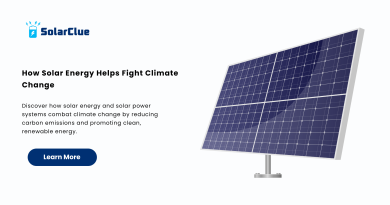A Comprehensive Guide To Energy Abbreviations In India
The energy sector of India, an emerging country on the global stage, is vast and multifaceted, dealing with multiple types of energy like renewable, nonrenewable, nuclear, solar, wind, and biogas. As complex as this sector is, it becomes imperative to understand the numerous abbreviations associated with the Indian energy sphere. This comprehensive guide aims to demystify these acronyms and abbreviations for you, aiding in a better understanding of the labyrinth of terms and concepts that envelop India’s energy landscape.
Table of Contents
Abbreviations in India’s Energy Sector Overview
To grasp the broad-ranging dimensions of India’s energy sector, let’s introduce a cross-section of the most common abbreviations you’ll likely encounter. The Ministry of Power (MoP), the Government of India’s department, takes the lead in the development of the country’s power infrastructure. Under the aegis of the MoP, the Central Electricity Authority (CEA) is a key player responsible for the technical supervision of various power systems.
The Ministry of New and Renewable Energy (MNRE) is another crucial wing of the government that regulates non-conventional energy sources like wind and solar power. Moreover, you’ll come across abbreviations like Independent Power Producers (IPPs), or Captive Power Plants (CPPs), which signify plants generating power independently or specifically for an industry or group of industries, respectively.
Renewable Energy Abbreviations
Solar power has gained prominence in recent times, resulting in abbreviations like Solar Energy Corporation of India (SECI) or Grid-Interactive Renewable Power (GIRP) often appearing in the domain. Also, the Jawaharlal Nehru National Solar Mission (JNNSM) was a key governmental scheme for solar power development.
India’s wind power sector, too, comes with its series of acronyms. For example, the National Institute of Wind Energy (NIWE) is a critical research and development institution. Abbreviations such as Wind Power Density (WPD) and Feed-In Tariffs (FITs) express the wind energy potential of an area and regulation of energy prices, respectively.
Nonrenewable Energy Abbreviations
The nonrenewable sector of India’s energy landscape is no less significant. As suitable abbreviations, the Ministry of Coal (MoC) and Ministry of Petroleum and Natural Gas (MoPNG) regulate the country’s coal and petroleum resources. On another note, abbreviations like Oil and Natural Gas Corporation (ONGC), or Bharat Petroleum Corporation Limited (BPCL), represent important players in the fuel sector.
When it comes to nuclear power, one might come across abbreviations such as the Department of Atomic Energy (DAE) or the Atomic Energy Commission (AEC), which operate under the direct charge of the Prime Minister.
General Energy Abbreviations
As we traverse the broad expanse of the energy sector, more generic acronyms often crop up. Terms like Units of Electricity (UoE) or British Thermal Units (BTUs) express measurements of energy. The Energy Conservation Act (ECA) refers to the Indian legal framework focusing on energy conservation.
When it comes to energy consumption and demand, Peak Load (PL) and Power Deficit (PD) are vital abbreviations to note since they signify the maximum load or deficit in power supply during a specific period.
Conclusion
Understanding the energy lingo is an essential step in engaging with the complex and multifaceted world of India’s energy sector, whether you are a policy-maker, researcher, investor, or a curious onlooker. These abbreviations are not only terms; they also represent critical institutions, concepts, and measurements that fuel India’s energy landscape. This comprehensive guide has served as a primer, introducing you to the vital abbreviations to help you navigate India’s energy sector with ease and confidence.
Here at SolarClue®, we offer a smart, practical, and “beautiful” solution. You will be answered for all the questions related to Solar.
We provide all kinds of brands that are the Best Solar panels in India.
If you are the one who is planning for the solar power system. Don’t hesitate to contact our team!
Looking forward to empowering you with solar energy, just like hundreds of our other clients!



